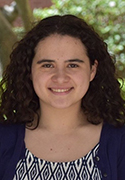Over the course of the semester, our trainees are reviewing webinars in their given fields and preparing abstracts to help colleagues outside their discipline make an informed choice about watching them. As our program bridges diverse disciplines, these abstracts are beneficial for our own group in helping one another gain key knowledge in each other’s fields. We are happy to share these here for anyone else who may find them helpful.
Changing the Landscape of Mass Detection in the Chromatography Lab
David Wayland, Empower Product Manager
April 28, 2016
Hosted by Waters
Watch on the Waters website >>
This webinar describes an analytical technique called LC (liquid chromatography) which is sometimes used with MS (mass spectrometry) and sometimes with other detection methods, such as UV spectroscopy. In his talk, Dr. Wayland explains how LC has become more common and widely available to researchers today than in previous decades and what he predicts for the future.
Dr. Wayland explains how in the past, LC was only available to those with very specialized knowledge, but now there are forms of this technique as well as MS that are able to be used by researchers without extremely specialized knowledge or previous experience with these techniques. Therefore, it’s now possible for people of different skill sets and amounts of experience with these techniques to use LC and MS. This means that this technique is becoming more and more useful to researchers studying a broad range of topics.
Dr. Wayland goes on to give examples of how LC is becoming more accessible to a greater number of researchers. For example, it can be used with several types of detectors including UV light detection, photodiode ray, and MS, which offer increasing capabilities when it comes to gaining more information about the analyte. These also involve increasing amounts of time that must be put in to perform the technique and to interpret the results. Dr. Wayland explains how researchers can use a more complicated detection method like MS when they are interested in knowing certain information which only this technique can provide. Researchers can switch to a more challenging (and informative) detection method only when an experiment requires it, such as a situation where the pH changes, affecting the UV spectra. Within MS, people can also start with simpler, now well-established methods for data acquisition and analysis, and then later make their workflows more complex if they find that more information is needed for their particular problem of interest.
With the development of MALDI and ESI ionization techniques in the last few decades, LC-MS is now highly applicable to the analysis of biological samples, which are usually in the liquid or solid (condensed) state. LC and MS have also become cheaper and more accessible in many other ways in recent history. This means that these analytical techniques are more widely used today than they have been in the past, and will continue to be even more useful and accessible in the future to a wide range of researchers.


